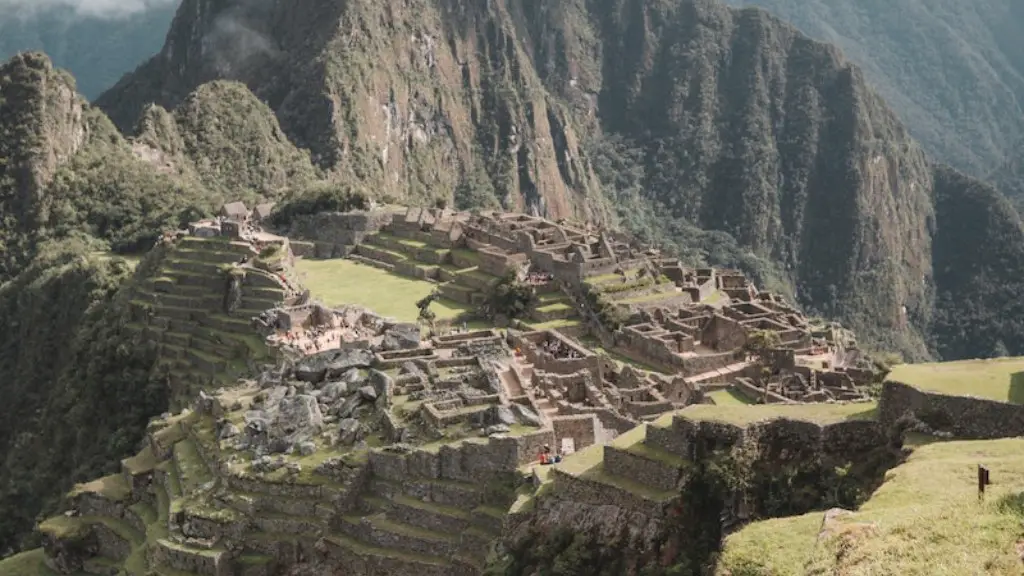Overview
Pompeii is an ancient Roman city near modern Naples. It was destroyed in 79 AD by a volcanic eruption. It laid hidden under layers of ash and rock until it was rediscovered in 1748. This UNESCO World Heritage Site is one of Italy’s foremost tourism attractions, renowned for its ancient remains and artefacts. But how large is Pompeii?
Size
With an area of 66 hectares, Pompeii is large compared to other ancient settlements. Estimates say the archaeological site was once home to around 15,000 inhabitants, which made it a busy and thriving community. With its width of 2.2 kilometres and length of nearly 1.6 kilometres, the ancient city of Pompeii was one of the largest in the Roman province. Evidence of this can be seen in the ruins and the 22 blocks that are divided into nine regional areas.
Today, the site appears to be mostly surrounded by walls, but archaeologists believe that they may have been reconstructed as a result of the city’s decline. Initially, walls surrounded the area near the harbour and the amphitheatre while many inner blocks were likely accessible by open road.
Layout
The city’s layout is divided into insulae,, or blocks of homes and businesses. These insulae were organized in a grid pattern, allowing Pompeii to expand rapidly over time. Its central area was the Forum and much like other Roman cities, several monuments, markets and other public areas surrounded it. There were several main roads within the city, as evidenced today by the modern-day Via dell’Abbondanza that is lined with former homes, workshops, and other establishments.
Many of these locations demonstrate the importance of certain crafts at the time, or evidence of religious or political importance. Most households in Pompeii were modest dwellings, consisting of a single unit that includes a triclinium (dining area) as well as three other rooms.
Buildings & Structures
Several prominent buildings still stand in Pompeii, including the Macellum that was the city’s main square. The city also boasts the Temple of Isis, the Temple of Venus, the teatrum, and several thermal baths and public fountains. There is also evidence of a well-functioning system of aqueducts, sewers, and drainage channels, as well as roadways with paving stones that are still existent today.
On a supposedly spiritual level, Pompeii was an important centre of worship for the Roman religion. For example, the House of the Faun had a private shrine dedicated to Bacchus, the god of wine, and several other deities.
Economy & Tourism
Pompeii was also known for its thriving economy. There is evidence of numerous shops, as well as artisan workshops and boutiques set up along the streets. Traditional Roman trades such as clothing, wine, and luxury goods were popularly traded. Evidence of a thriving tourism industry can also be found in the abundance of taverns, shops, and other recreational establishments.
Today, Pompeii is a major tourist attraction. Each year, millions of people come to explore the ruins and learn about its history. This has made it one of Italy’s most visited sites, with visitors often returning for multiple visits. The author of BBC Travel’s piece on Pompeii, Heather Richardson, noted that even two visits are not enough to experience all this city has to offer.
Archaeology & Conservation
Much archaeological work has gone into preserving Pompeii, both before and after its rediscovery in 1748. Conservation initiatives have focused on both restoring ruins and re-creating their original appearance. In 1997, the Pompeii Archaeological Park was established to protect the city’s remaining ruins and to promote preservation efforts.
Conservationists and archaeologists understand that while these ruins are an incredible source of information, they are also fragile and require careful management. In 2007, the Infrastructure and Sustainable Development in Europe’s Heritage Sites project, also known as ISD-Pompeii, was established to reduce the site’s vulnerability to natural disasters.
The ISD-Pompeii project has worked to preserve the archaeological site with a focus on integrating nature, culture, and technology to develop best practices in the conservation of Pompeii. The project has also sought to build a conservation methodology that is unique to the site. All of this work has been vital to protect the ruins from further damage due to the environment or human activity.
Significance
The ruins of Pompeii offer a unique insight into the society of ancient Rome. It’s a great place to learn about their culture, society, and way of life. People can still visit the city to wander its streets and explore its buildings and baths, getting a taste of the lifestyle of the ancient Romans. This makes Pompeii a great place not only to learn history and ancient cultures but also to experience them.
The ruins of Pompeii are a reminder of the tragedy of human nature and the fragility of life. They also serve as a potent symbol of how civilisations have changed and evolved throughout time. The ruins demonstrate the importance of preserving and protecting historical sites, as well as our duty to safeguard our collective heritage.
Preservation
The preservation of Pompeii is a challenging and complex endeavour. Due to its unique nature, archaeologists must strike a balance between conducting the restoration of the site and preserving its authenticity. The archaeology team and the communities around the city need to work together in this effort in order to preserve it for future generations. Current conservation initiatives involve protecting the remains from natural disasters, developing a site management plan, and educating visitors about the significance and history of the site.
Rome has also implemented several plans to improve and protect the area. These include limiting the number of visitors to Pompeii, building infrastructure to protect the ruins, and introducing new technology to track visitors and conserve the site. All of these measures have helped protect the ruins and the archaeological findings, while still allowing the public to appreciate the beauty and significance of this ancient city.
Conclusion
Pompeii is an ancient Roman city that was preserved beneath ash and rock until its rediscovery in 1748. With an area of 66 hectares, it is one of the largest Roman ruins in the province. The ruins of Pompeii are a unique insight into the culture and lifestyle of the ancient Romans. Conservation initiatives have been undertaken to protect and preserve the site for future generations. With its views, buildings, and artefacts, Pompeii is one of the most significant historical sites in Italy.


